Learn How To Make Paneer At Home with this easy, 2-ingredient recipe. Soft, perfectly textured homemade paneer is fresh, healthy, and free of additives. It is cheaper to make paneer at home than store-bought.
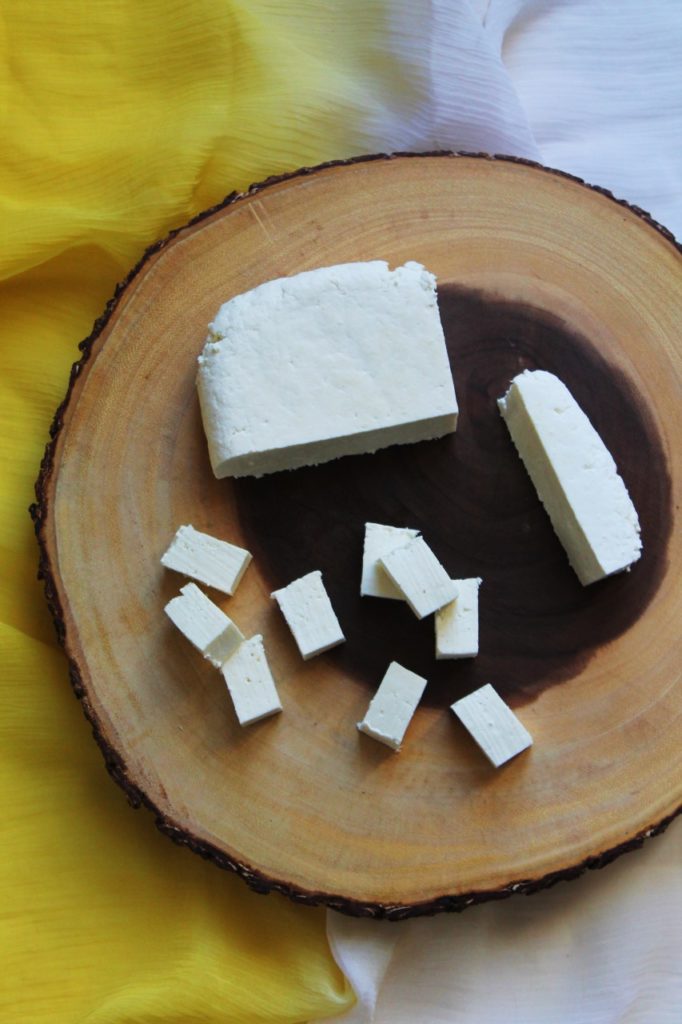
Growing up in India, I remember my mom always used to make fresh paneer at home. She used this homemade paneer in many Indian dishes like Kashmiri Paneer Masala, shahi paneer, and one of my favorites Palak Paneer
I loved the soft and creamy texture of paneer, with some rich and creamy gravy made out of saag (spinach). A perfect blend of texture, spices, and flavors!
Paneer is quite versatile and can be used in many Indian dishes, from savory to sweet, for making curries or for grilling. Paneer is perfect for grilling as it does not melt.
Popular Indian desserts like Ras malai, rasagulla, paneer kheer are all made with paneer.
A variety of appetizers are made using paneer like Paneer pakora and Paneer Tikka are my favorite. There are many many ways you can use paneer, the possibilities are endless?
Jump to:
- What Is Paneer
- Characteristics of Paneer
- Difference Between Paneer And Cheese
- Why Make Paneer At Home
- Ingredients For Homemade Paneer
- 5 Acidic Foods Used To Make Paneer
- How To Make Paneer At Home
- How To Use Whey
- Storage
- Tips
- FAQ's
- Recipes Using Paneer
- How To Make Paneer At Home | Homemade Paneer Recipe
- How To Recipes
What Is Paneer
Paneer is a type of fresh cheese that originates from the Indian subcontinent. It's a key ingredient in many Indian dishes and is widely used in vegetarian cooking due to its versatility and mild flavor.
Paneer is known for its crumbly yet creamy texture and its ability to absorb flavors from the dishes it's cooked in.
Paneer is valued not only for its taste and texture but also for its high protein content. It serves as an excellent source of protein for vegetarians and those looking to incorporate more plant-based options into their diets.
Characteristics of Paneer
Paneer has a soft, crumbly texture that holds its shape well. It is usually sold in blocks or cubes. The color of paneer is white, and it doesn't have a strong flavor on its own, making it an excellent canvas for absorbing the flavors of various spices and sauces.
Paneer is made by curdling milk with an acid like lemon juice or vinegar. The curdled milk is then drained, and the resulting curds are pressed to remove excess moisture. This simple process yields fresh, homemade paneer.
Difference Between Paneer And Cheese
In comparison to cheese, paneer has fewer calories, fat, and protein content, making it a healthier alternative for those who are watching their calories.
Paneer is made by curdling milk. Milk is curdled with an acidic substance like lemon juice, vinegar, buttermilk, curd(yogurt), or citric acid.
Paneer is not aged or fermented like other cheeses. No Rennet is used in the making of paneer, making it purely a vegetarian cheese.
Paneer is made in a similar way as Ricotta cheese. It does not melt like other cheeses. Makes it an excellent candidate for grilling.
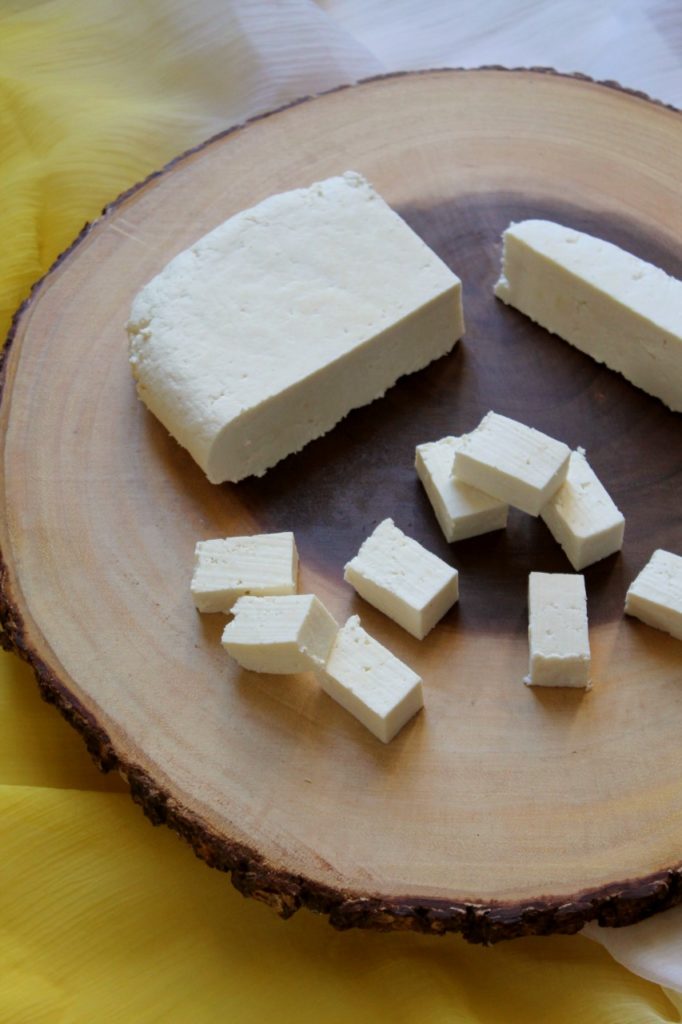
Why Make Paneer At Home
While making paneer at home requires a bit of time and effort, the benefits in terms of quality, taste, and customization make it a worthwhile endeavor for many cooking enthusiasts. Making paneer at home offers several benefits, including:
Quality Control: When making paneer at home, you have control over the ingredients used, ensuring you get the freshest and highest-quality milk without additives or preservatives.
Customization: Homemade paneer allows you to customize its texture, flavor, and consistency according to your preferences, resulting in a product that perfectly suits your culinary needs.
Freshness: Homemade paneer is typically fresher and more flavorful than store-bought options, as you can make it on the day you plan to use it.
Cost-Effective: Making paneer at home can be more cost-effective, especially when compared to premium or artisanal store-bought varieties.
No Additives: Homemade paneer avoids the use of additives or stabilizers that might be present in some commercial options.
Health Benefits: Paneer is a good source of protein, calcium, and other nutrients. Making it at home ensures that you're using quality ingredients and can control its nutritional content.
Ingredients For Homemade Paneer
Here's a description of the main ingredients used to make paneer:
Milk: Milk is the primary ingredient for making paneer. It's recommended to use full-fat milk for the best results. The fat content in the milk contributes to the creaminess and texture of the paneer.
Lemon Juice or Vinegar: Lemon juice or vinegar is used as an acid to curdle the milk. When added to the hot milk, it causes the proteins in the milk to coagulate and form curds. The curds are then separated from the whey, resulting in paneer.
5 Acidic Foods Used To Make Paneer
Depending upon the type of acidic food used to curdle the milk, the texture of the paneer will vary. Here are 5 acidic foods used to curdle the milk:
Vinegar: A soft and firm texture paneer is obtained using vinegar. Use white distilled vinegar for this recipe.
Lemon or Lime Juice: Paneer obtained by curdling milk using lemon juice has a soft, and firm texture. Similar to the one you get with vinegar. Depending on how sour the lemons are, you may have to adjust the quantity of lemon juice.
Yogurt or Curd: In comparison to vinegar or lemon juice, yogurt-based paneer has a softer texture. The paneer is very soft and is hard to form into a block. This type of paneer is best used to make sweets.
Buttermilk: The texture of the paneer is very similar to the one obtained using yogurt. Very soft, and hard to form into a block of paneer. Best used to make sweets or sometimes I even use it to make paneer bhurji (scrambled paneer), a savory dish.
Citric Acid: This is used in the commercial making of paneer. You will usually find the store-bought paneer to be very firm and chewy. This type of texture can be obtained using citric acid.
To make paneer using citric acid, you will need to dissolve the citric acid in water and use this acidic water to make paneer.
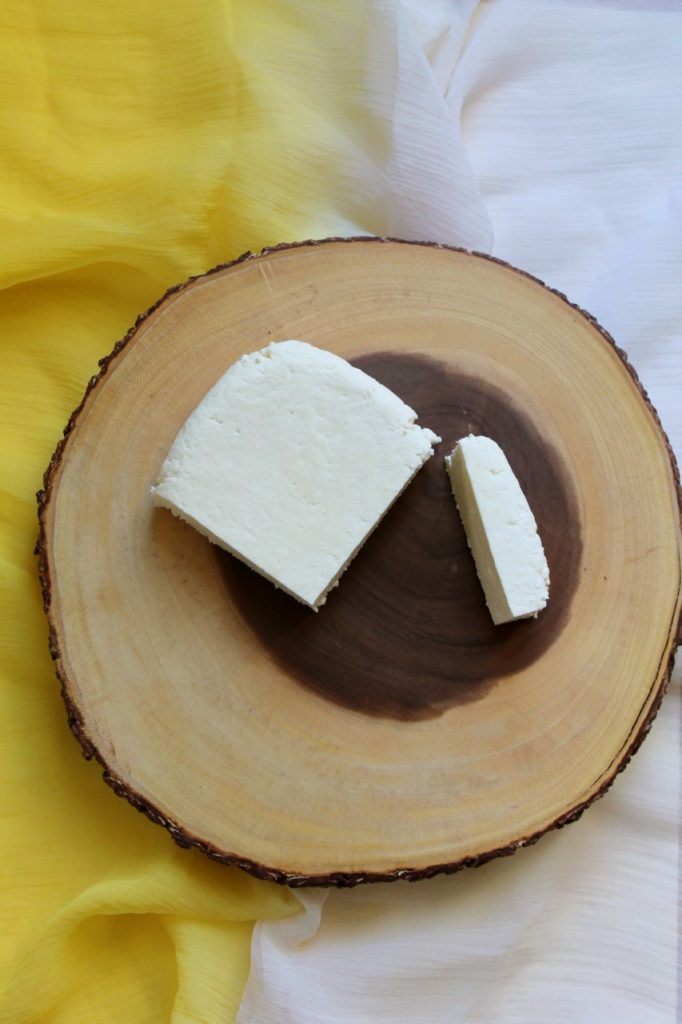
How To Make Paneer At Home
Making paneer (Indian cottage cheese) at home is quite simple and requires just a few basic ingredients. Here's a step-by-step guide on how to make paneer:
Boil the Milk: Pour the milk into a heavy-bottomed pot and heat it over medium heat. Stir occasionally to prevent the milk from sticking to the bottom of the pot.
Add Acid: Once the milk comes to a gentle boil, add the lemon juice or vinegar. Stir gently. The milk will start to curdle, and you will see the whey (greenish liquid) separating from the curds (paneer).
Continue Cooking: Keep stirring until the milk is fully curdled, and the whey is clear. This process usually takes a few minutes. If the whey is not clear, add a bit more lemon juice or vinegar and continue stirring.
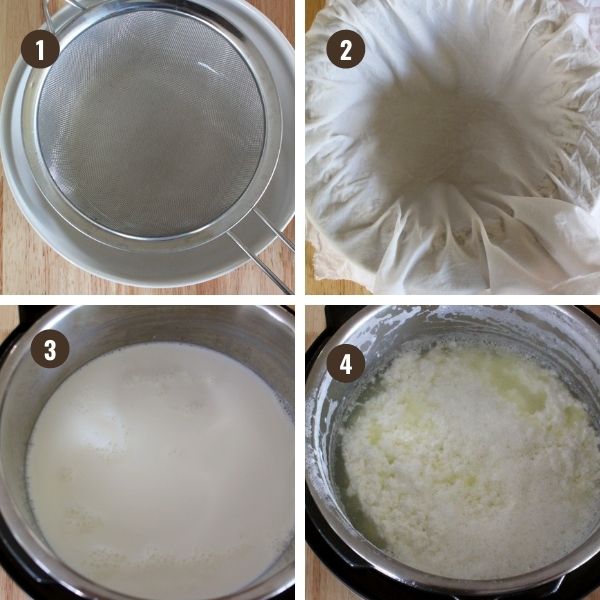
Strain the Curds: Place a colander in the sink and line it with a double layer of cheesecloth or muslin cloth. Pour the curdled mixture into the colander. The whey will drain out, leaving behind the curds.
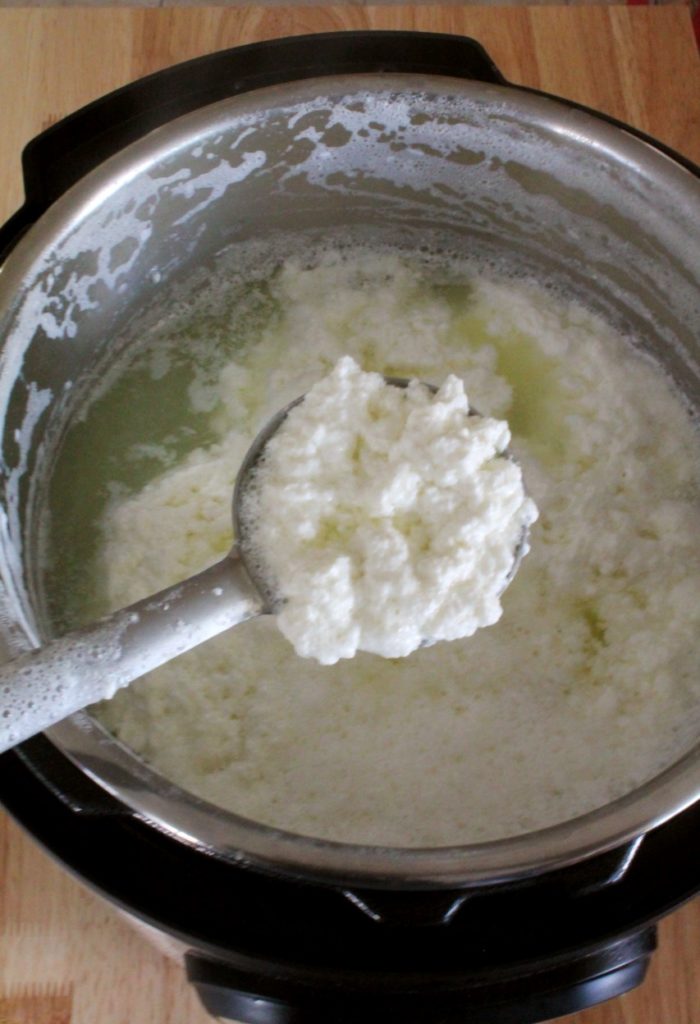
Rinse the Curds: Rinse the curds under cold water to remove any residual lemon juice or vinegar taste. Press and remove any extra liquid.
Pressing the Paneer: Place the bundled curds between two flat surfaces (such as plates) and put some weights on top. This will help press the paneer and remove additional moisture. Leave it like this for sometime or until the paneer becomes firm.
Unwrap and Use: Unwrap the cheesecloth, and you'll have your homemade paneer ready to use. Cut it into cubes or crumble it, as needed, for your recipes.
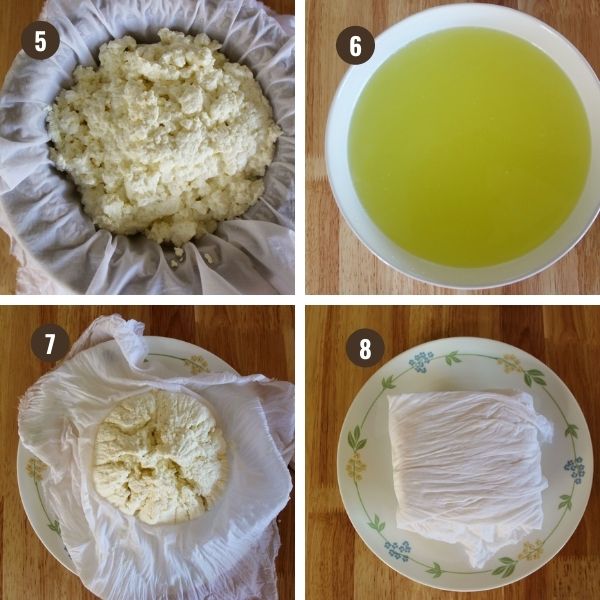
Storage: Paneer can be stored in the refrigerator for a few days. To keep it fresh, store it in an airtight container submerged in water.
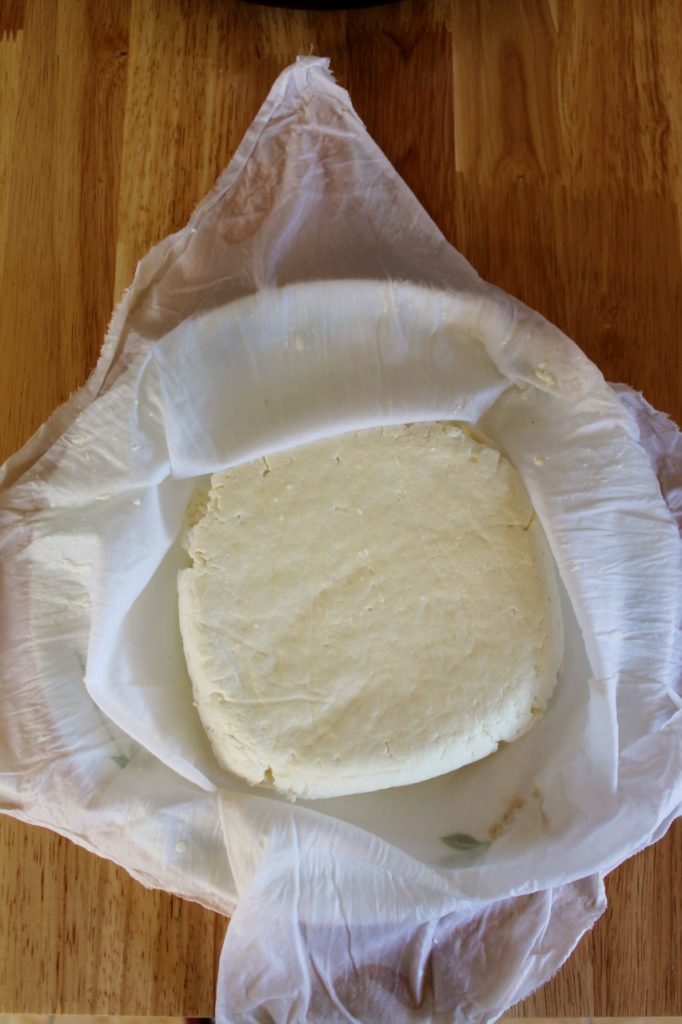
How To Use Whey
Whey is the white or greenish-colored liquid left after making the paneer. This whey is rich in nutrients value. Think of whey as a vegetable broth.
You can use the whey pretty much in the recipe that calls for water or broth. Possibilities are endless. Use the whey cautiously as it will taste slightly sour.
Whey stays good in refrigerator for up to a week. Store it in an air-tight glass container and use it as desired.
Here are a few ways to use whey:
Use this nutrient-rich whey to knead the dough for bread, roti, paratha, naan.
Substitute whey in place of water or broth in the recipe. I use it to make gravy or curry and replace water with whey.
Use this whey to cook pasta, rice, smoothies, or soups. In baking. use it to make bread dough or cookie dough.
Whey is an excellent source of nutrients for your plants. Give a boost to your plants by adding whey mixed with some water.
Storage
Store paneer in an airtight container in the refrigerator, either submerged in water or without water if using it within a few days.
For longer storage, freeze it in individual portions wrapped tightly and thaw in the refrigerator before using.

Tips
Here are some tips for making, storing, and using paneer effectively:
Choose Fresh Milk: Use fresh, high-quality milk for the best results. Full-fat milk yields creamier and richer paneer.
Balancing Acid: When adding lemon juice or vinegar to curdle the milk, start with a small amount and add more as needed. You want the milk to curdle completely, but not excessively.
Draining Whey: Ensure the whey is clear when draining the curdled milk; this indicates that the curdling process is complete.
Customizing Texture: Adjust the pressing time to control the texture of the paneer. Longer pressing yields firmer paneer, while shorter pressing yields softer paneer.
Storage Container: Use airtight containers for storing paneer in the refrigerator to prevent absorption of odors and moisture loss.
Submersion in Water: If you're storing paneer in water, change the water daily to keep it fresh.
Freezing Consideration: While freezing paneer is possible, be aware that its texture may change. It's best used in cooked dishes where texture isn't as critical.
Rejuvenating Paneer: If your paneer has become slightly dry, you can soak it in warm water for a few minutes before using it to restore some moisture.
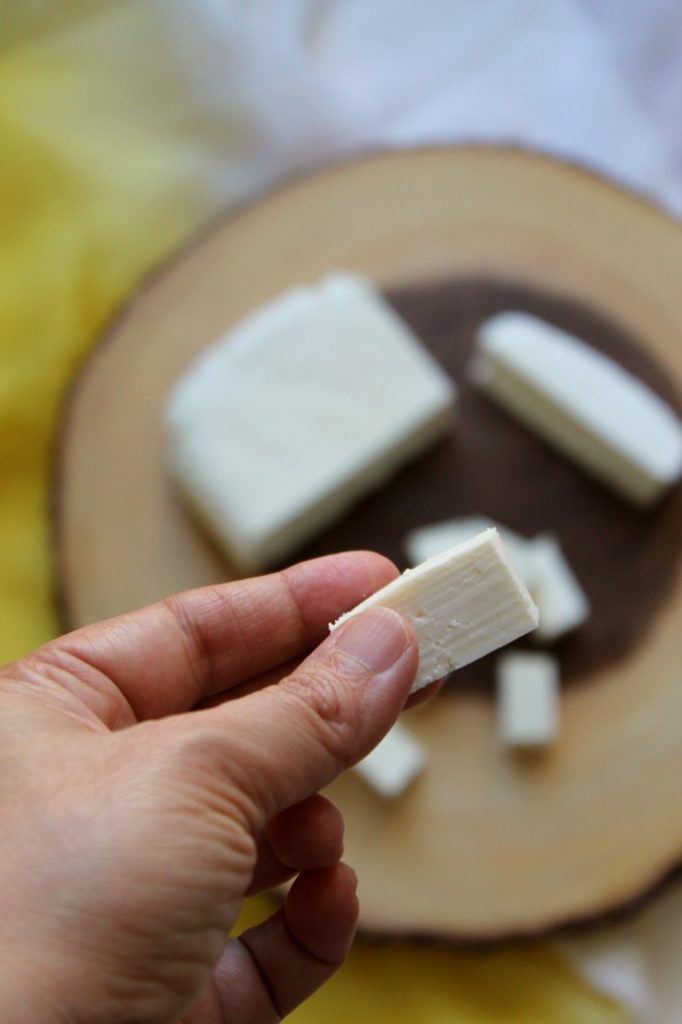
FAQ's
Paneer is made by curdling milk with an acid (like lemon juice or vinegar), separating the resulting curds from the whey, draining and pressing the curds to remove excess moisture, resulting in fresh, crumbly cottage cheese used in various dishes.
No, you do not need to boil paneer before frying it. Paneer can be directly sautéed or fried in a pan to achieve a golden-brown and slightly crispy exterior while keeping its soft interior intact.
Yes, homemade paneer can be delicious and flavorful, allowing you to customize its texture and taste to your preferences. Making paneer at home also gives you control over the quality of ingredients used and can result in a fresher and more wholesome product compared to store-bought options.
Cottage cheese is a soft, curd-like dairy product that is typically made from cow's milk and has a creamy texture with visible curds. Paneer, on the other hand, is a firmer, non-melting Indian cheese made by curdling milk with an acid, like lemon juice or vinegar, and has a crumbly yet creamy texture, commonly used in Indian cuisine.
If there is too much moisture left, the paneer will not set properly and will crumble. Leave the weights on a little longer, to remove any extra moisture. Refrigerate the paneer it will firm up nicely.
You can flavor the paneer as per your taste. Add the seasoning of your choice after the milk has curdled.
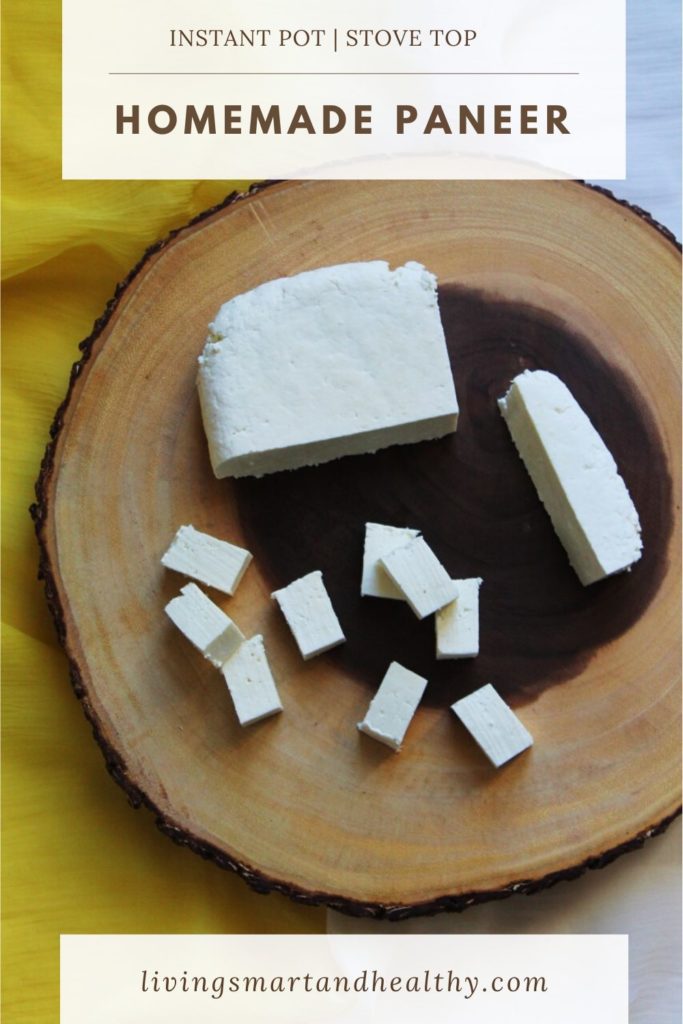
Recipes Using Paneer
How To Make Paneer At Home | Homemade Paneer Recipe
Ingredients
- 1 gallon full fat / whole milk
- ¼ cup distilled white vinegar
Other essentials:
- piece of cheesecloth (muslin cloth or thin cotton cloth)
- large colander
- large mixing bowl
Instructions
HOW TO MAKE PANEER – INSTANT POT METHOD
STEP 1: LINE A COLANDER WITH A CHEESECLOTH
- Line a large colander with a piece of a double layer of cheesecloth and place the colander onto a large empty bowl.Note: You can use cheesecloth or a muslin cloth.
STEP 2: BOIL THE MILK
- Press YOGURT twice to get the BOIL setting.
- Add 1 gallon of full-fat (whole) milk. Close the lid with the vent sealed.
- When the program is done, allow 10 minutes of natural pressure release.Note: It takes around 40 minutes to boil the milk in Instant Pot.
- Carefully open the lid. Select SAUTE – HIGH.
- Let the milk come to a boil, for around 10 minutes. Keep stirring in-between to prevent any milk from sticking to the bottom of the pot.
STEP 3: ADD VINEGAR
- Allow the milk to come to a boil. Add vinegar, mix gently. Milk starts to curdle immediately, as soon as the white milk solids and whey (greenish liquid) separate. Cancel SAUTE.
STEP 4: STRAIN THE MILK SOLIDS
- Immediately pour the contents into the colander lined with cheesecloth to strain the whey out.
STEP 5: RINSE THE PANEER
- Carefully lift the colander and rinse it under cold water to remove any smell from the vinegar.
STEP 6: PRESS THE PANEER
- Grab the ends of the cheesecloth and twist them to form a ball. Twist the cheesecloth to remove any extra liquid.
- Place the cheese ball on a plate with a twisted part of the cheesecloth on the side (this assures a nice and smooth block of cheese). Place a second plate on top of the paneer. Add some weight to the second plate to set the paneer. I normally keep weight equivalent to a gallon (an empty jar of milk filled with water, an oil container, or cans filled with beans).
- After 30 minutes. check if the paneer is set. A soft, firm block of paneer will be formed. If required add a few more minutes. for paneer to set. Note: Paneer will harden upon refrigeration.
- Cut the paneer into desired pieces and use it in your favorite dish. Enjoy!!
HOW TO MAKE PANEER – STOVETOP METHOD
- In a heavy bottom pot, on high heat, add milk and bring it to a boil. Keep stirring in-between to prevent any milk from sticking to the bottom of the pan. The rest of the recipe is the same as Instant Pot.
Notes
- Tips For Soft Homemade Paneer
- How To Use Whey
- FAQ's

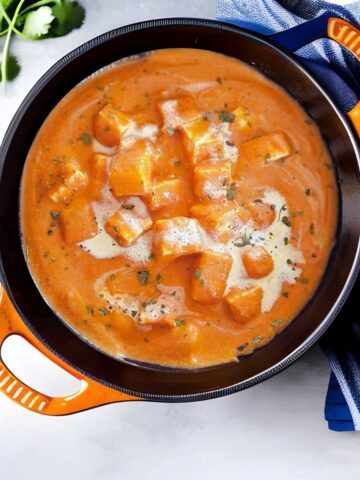
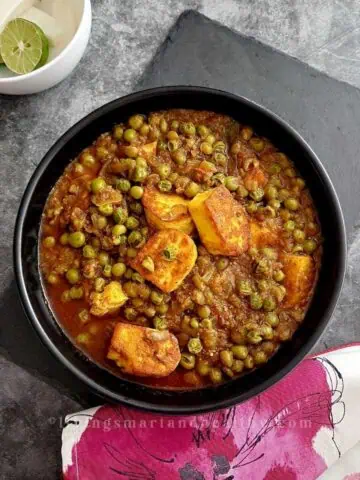
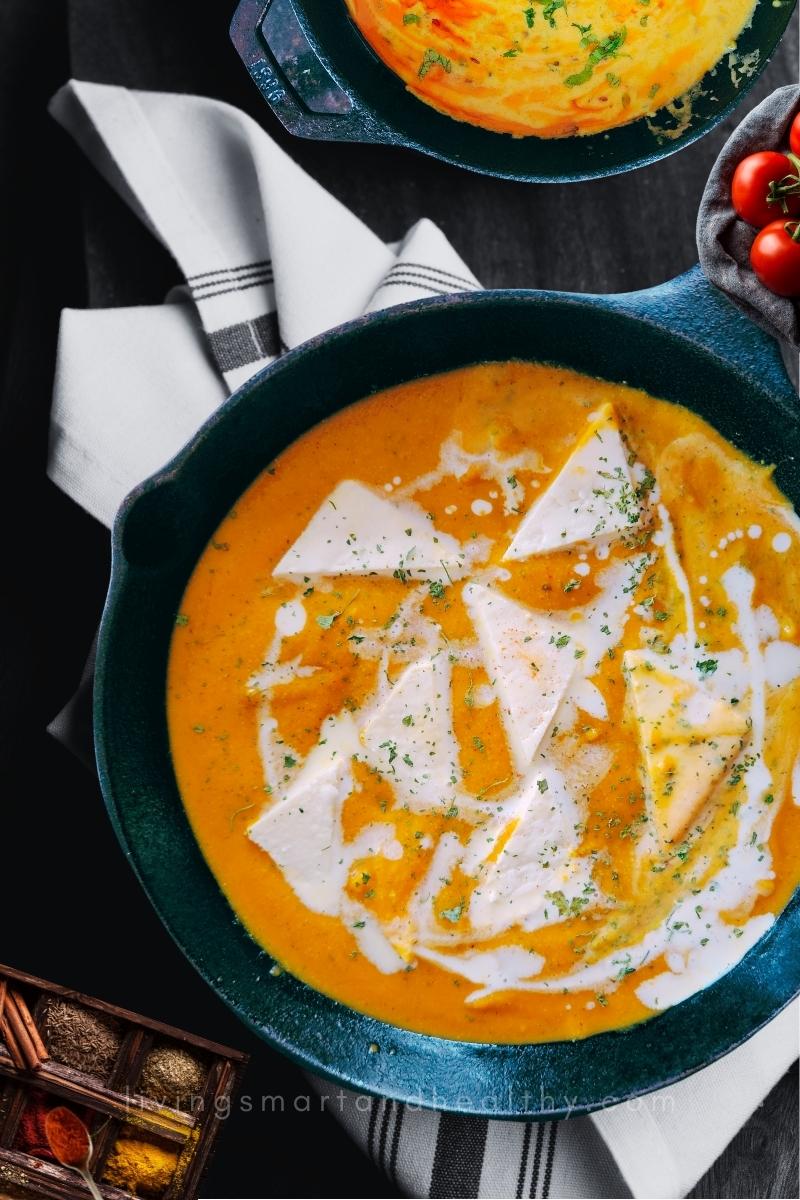
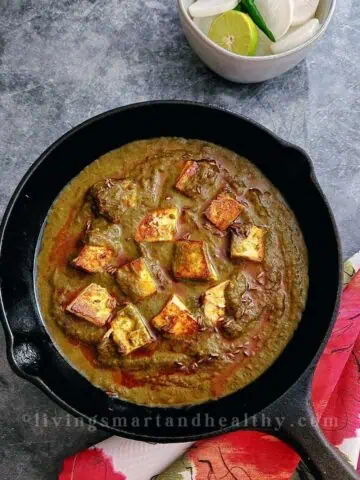
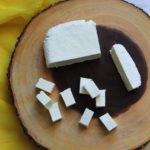
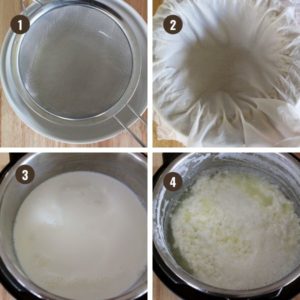
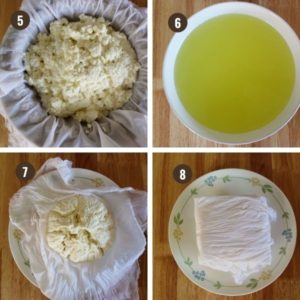
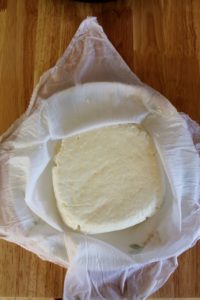
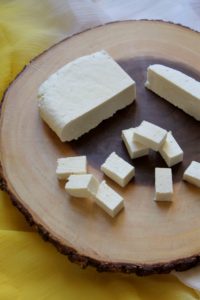
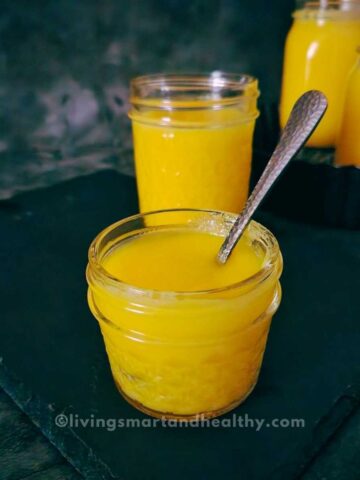
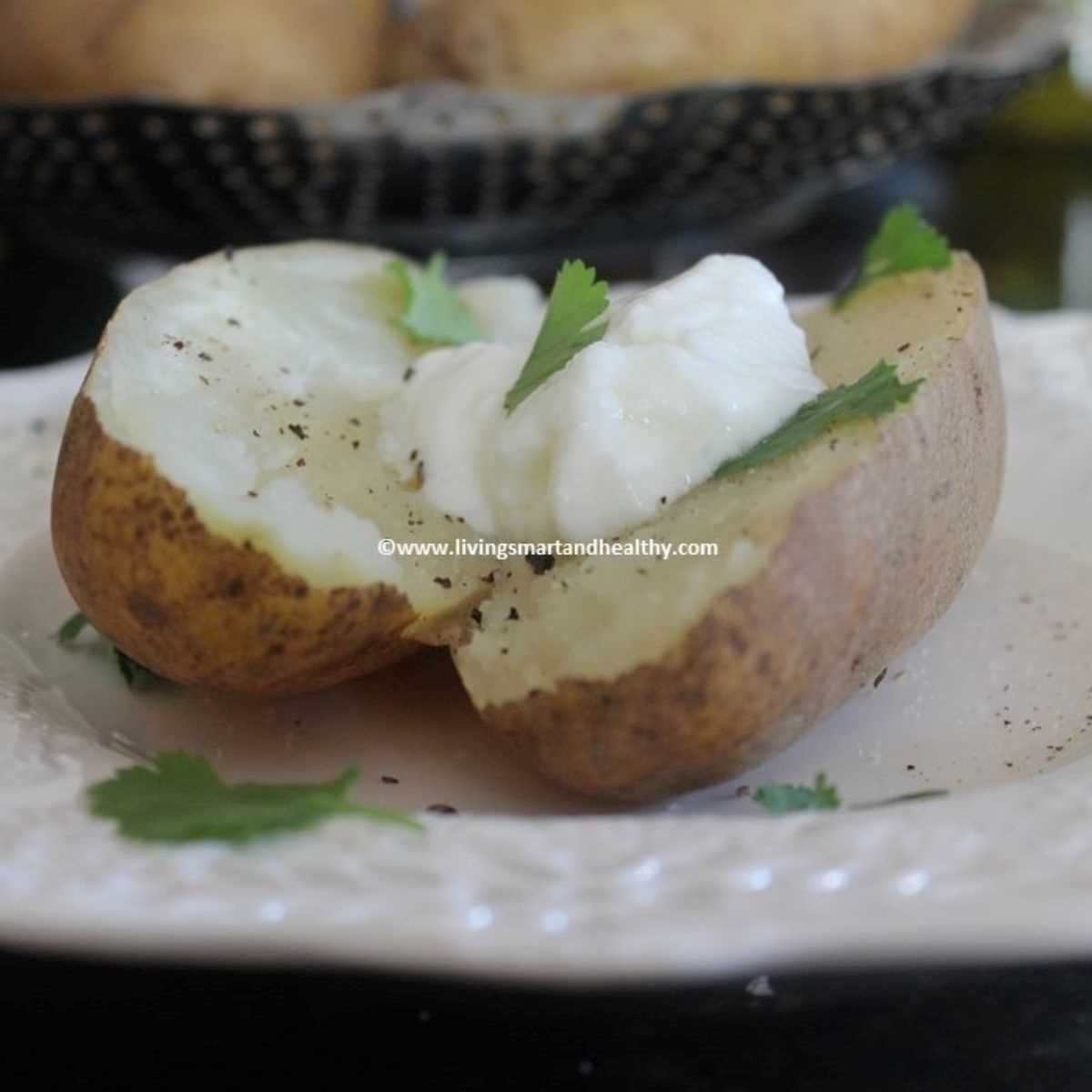
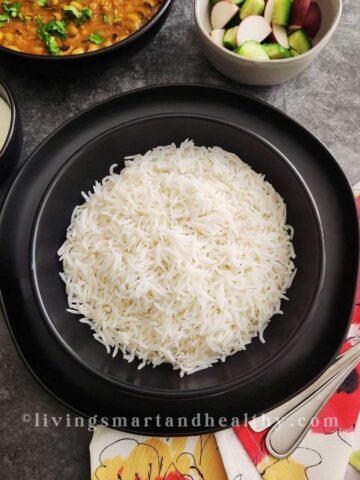
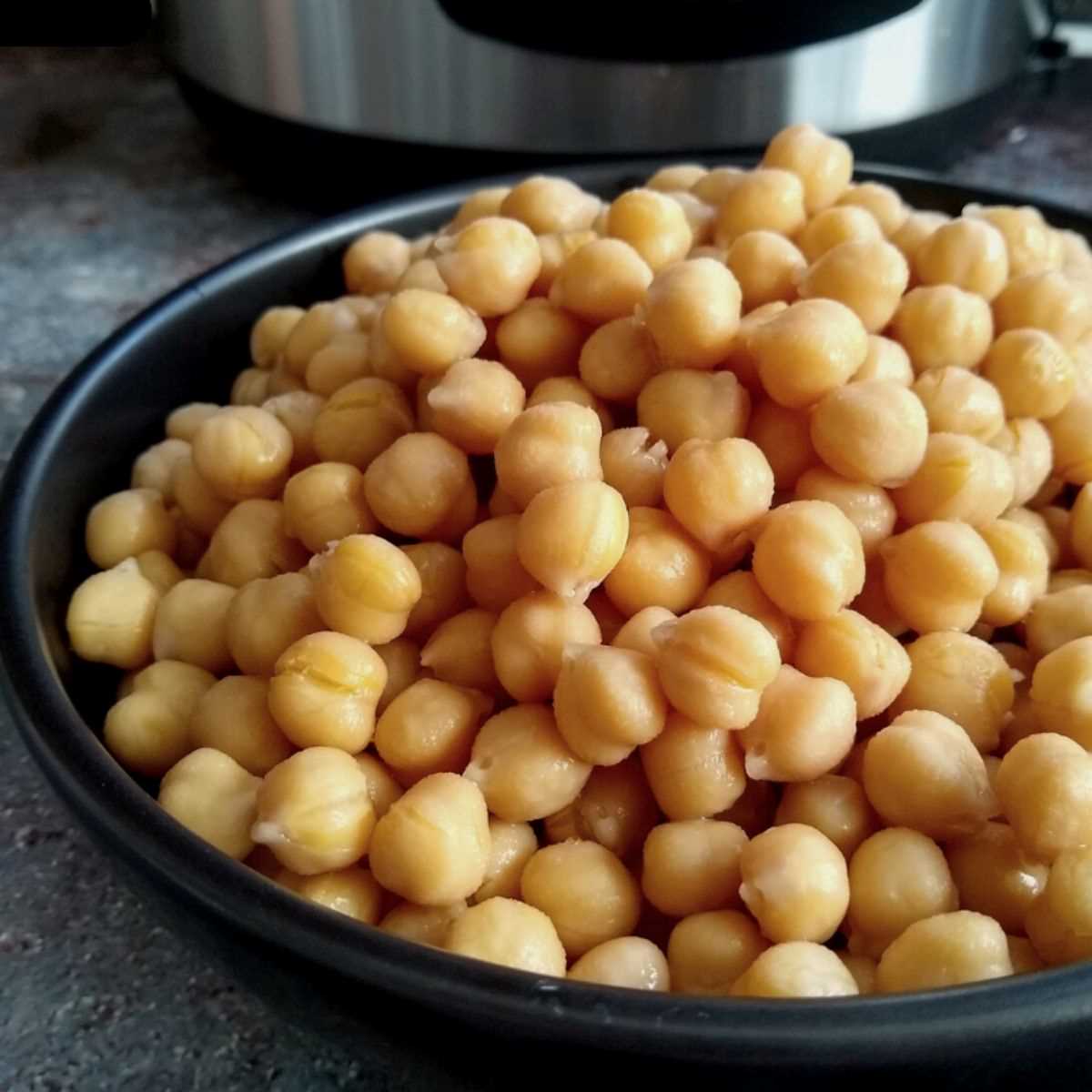
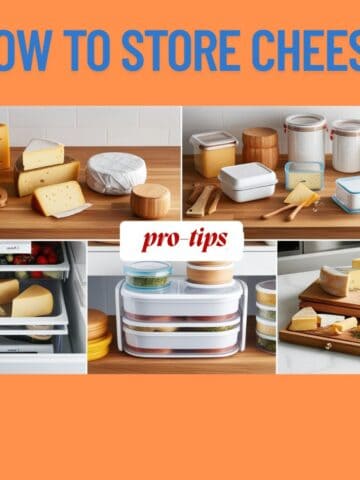
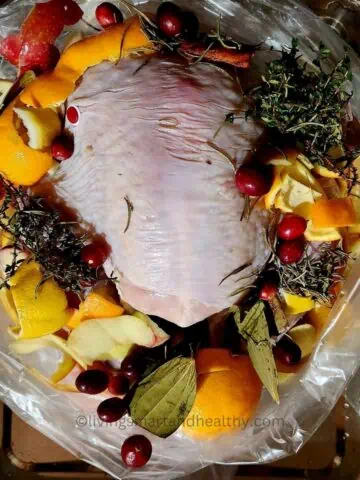
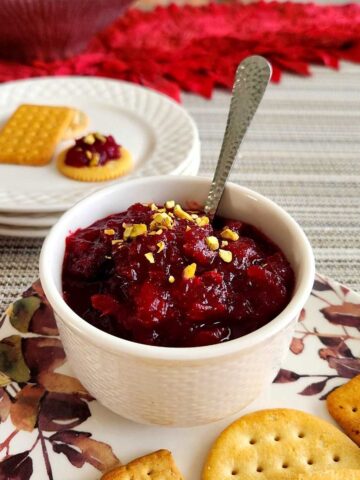
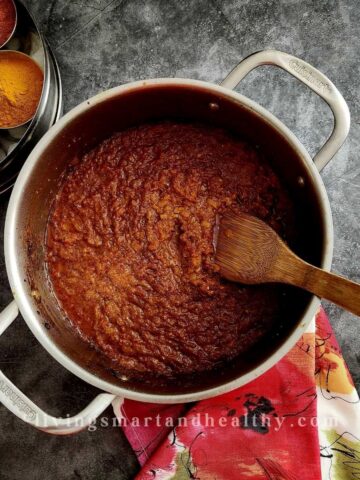
Geetu says
What size if insta pot you are using while boiling 1 gallon milk? I have 6qt duo, and just want to be sure that I can boil 1gallon milk at one time in it.
Thanks
Jyoti Behrani says
Hi, The maximum amount of food you can pressure cook in a 6 quart Instant Pot is 4 quarts. A gallon of milk is equivalent to 4 quarts. You can easily fit one gallon of milk in a 6 quart Instant Pot. If you go for the 8 quart Instant Pot, the capacity to pressure cook is 5 1/3 quarts. Hope this helps. Thanks!
Patricia says
Question: can I convert this recipe for only a 1/2 gallon of milk rather than 1 gallon of milk? Would the boil time be reduced, accordingly? Thanks for any advice you can give on this....
Jyoti Behrani says
Hi Patricia, Yes, you can use 1/2 gallon of milk for this recipe. Reduce the quantity of vinegar to half as well. For Instant Pot, just follow the same recipe as discussed. If using a stove top, bring the milk to a boil, and than follow the recipe. Hope this helps. Thanks!
Katie says
I made this paneer this afternoon, because I live in a rural area, and I can't buy paneer. It's for a recipe I want to try. I followed the recipe exactly, and it tastes delicious. However, my paneer is much more crumbly than what's shown in the above pictures. It did cut into cubes, but it wants to fall apart. Any words of advice? Thanks for posting this recipe!
Jyoti Behrani says
Hi Katie, If paneer crumbles once it is formed into a block, it is due to moisture / liquid in it. It means it still needs to set. I would suggest to keep the weights for a longer time. Once the paneer is set nicely, it will not crumble. Hope this helps. Thanks!
Sonu says
Hi Jyoti- live your recipes. Thank you. My paneer never comes out in beautiful pieces like yours. The cheese ball always forms cracks and hence it crumbles. What could I be doing wrong? I had used 2% milk. Thanks.
Jyoti Behrani says
Hi Sonu, If paneer crumbles, it means there still some moisture left. You can leave the weights on little longer, and see if it helps. Also, you can refrigerate paneer for few hours or overnight, this will also help firm up paneer. Hope this helps.Thanks!
Anne says
Can I add salt or other seasoning to this recipe to add more flavor to the paneer?
Jyoti Behrani says
Hi Anne, Yes, you can add flavoring to your taste. However, I would suggest adding the seasoning after the milk has curdled, before you compress it to a block of cheese. Thanks!
Pearl says
Would you use the same ratio of lemon juice as the vinegar?
Jyoti Behrani says
Hi Pearl, It depends on how tangy the lemons are. I would start with half the quantity of lemon juice, and then add gradually as needed, until the milk solids separate. Hope this helps. Thanks
Dawn Adams says
So excited. I have enjoyed learning to make Indian cuisine and during this time of pandemic have explored new recipes. The milk is in the IP right now! Thank you for a very well written recipe.
Dawn Adams says
I must have left a bit too much moisture in the cheese product—it’s not setting that great. Chalk it up to learning. I’ll let sit a while longer and then refrigerate. Will use it crumbly if necessary!!
Jyoti Behrani says
You can leave the weights little longer. Paneer will also firm up once refrigerated. Thank you for trying my recipe and for your feedback!
Dawn Adams says
So, after 1 hour of setting I decided to remove the paneer from the wet towel and set it in a dry towel. I wrung it tight again and set it between the plates with the weight on top. After 30 minutes I put it in the fridge. Today it is set and looks like yours in the picture. I’m in heaven. I plan to make the spinach dish you recommend and have to wait until amazon delivers for the Asafetida..... thanks again.
Jyoti Behrani says
Awesome! I am so glad that the Paneer turned out well. Thanks!
Jyoti Behrani says
Great! I am so glad you found my recipe helpful.
Sumi says
Made it with stove top, perfect paneer. thanks 🙂
Jyoti Behrani says
Awesome! I am so glad you liked my recipe. Thanks for sharing your feedback!
Andrea Cunningham says
Hi, I tried making Paneer (not this recipe) and it failed. Someone suggested my milk was the problem as it was ultra pasteurized.
Your recipe doesn’t mention avoiding pasteurized milk. I’d like to try again but wanted to ask about the milk before I did. Thanks
Jyoti Behrani says
Hi, I use regular full fat milk and recipe works just fine. I have not tried making paneer with ultra pasteurized milk. So, when you made paneer with ultra pasteurized milk, did the paneer not set into a block, was it crumbly?
Akhila says
I made Paneer today using instant pot following your recipe.. It was amazing.. It was easy and the best paneer I have made.. Thank you for the recipe..
Jyoti Behrani says
Awesome! I am so glad you liked my recipe ? Thank you for sharing your feedback!
Lori Anne Haskell says
I made this as I cannot buy paneer in costa rica, where I live.
I halved the recipe. I used lemon juice as I was out of white vinegar. I ended up having to use double the amount of lemon juice to get it to curdle properly.
Once I drained and squeezed, I decided to put it in my tofu press. It turned out perfectly. Nof crumbly at all.
I am so stoked. Made it tonight in paneer Tikka Masala. It was amazing. Thanks so much.
Jyoti Behrani says
Awesome! Paneer Tikka masala with homemade paneer sounds delicious. I am so glad you liked my recipe 🙂 Thanks for sharing your feedback!
Supriya Kutty says
My day went great this recipe made my day as my family really appreciated me a lot thank you so much for putting up this article it was helpful and the recipe was the best ever.
Jyoti Behrani says
I am so glad you liked my recipe 🙂